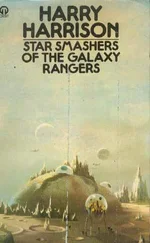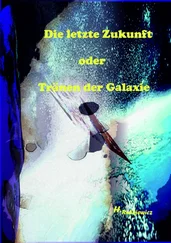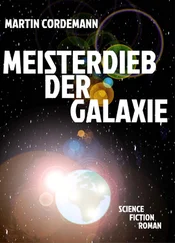1 ...6 7 8 10 11 12 ...17 Another interesting aspect of inner rings is that these features have a wide range of intrinsic shapes (deprojected minor-to-major axis ratio 0.5 to 1.0; Buta 2019) and are often regions of intense star formation. The distribution of star formation in inner rings is sensitive to this range: the more elongated the ring, the greater the concentration of HII regions around the major axis points (Crocker et al . 1996; Grouchy et al . 2010). The effect is especially evident in cuspy-shaped inner rings, of which NGC 6782 is the best example (Lin et al . 2008). It is also seen in NGC 3081 (Buta and Purcell 1998).
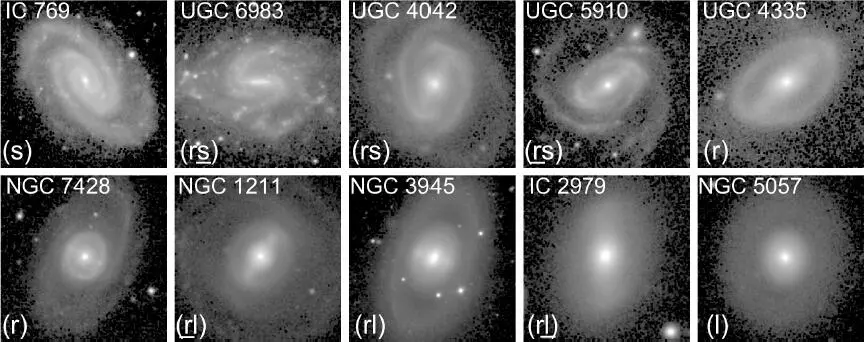
Figure 1.14. Examples of different inner varieties
Nuclear varieties : The nuclear variety of a disk-shaped galaxy refers to the presence of nuclear structure, usually in the form of a nuclear ring (nr), nuclear pseudoring (nr′), nuclear spiral (ns), nuclear bar (nb), nuclear lens (nl) or nuclear ring-lens (nrl). The features tend to be small and therefore are recognizable mainly in nearby galaxies. The features also have a wide range of linear diameters, from a few hundred pc to nearly 5 kpc (Comerón et al . 2010). In some cases, a nuclear ring is crossed by a nuclear bar. Figure 1.15shows several examples of spiral galaxies having a nuclear ring. In a CVRHS classification, the nuclear variety appears with the inner variety. For example, NGC 3081 is classified as  , where the inner/nuclear variety is (r,nr,nb). Knapen (2005) determined that 21±5% of spiral galaxies have nuclear rings or related features.
, where the inner/nuclear variety is (r,nr,nb). Knapen (2005) determined that 21±5% of spiral galaxies have nuclear rings or related features.

Figure 1.15. Examples of spiral galaxies having a nuclear ring
Outer varieties : Just as inner varieties refer to inner rings and lenses mainly, outer varieties refer to outer rings and lenses. While a typical inner ring or pseudoring in a barred galaxy has about the same size as the bar, the typical outer ring is about twice the size of the bar. Outer features are typically more diffuse than inner features, and of lower surface brightness. The main types of outer features include outer rings (R), outer pseudorings (R′), outer lenses (L), outer ring-lenses (RL) and outer pseudoring-lenses (R′L). An example of each of these, including a doubled outer ring case (RR), is shown in Figure 1.16. In all cases, the outer feature classification is positioned ahead of the family classification, as in (RL)SA(l)0° or (R′)SB(rs)ab.
In spiral galaxies, outer features tend to be pseudorings or pseudoring lenses. The best-defined outer rings tend to be found in S0 +or S0/a cases. The galaxies NGC 2859 ( Figure 1.16) and 3945 ( Figure 1.14) are two of the best examples of outer rings. Both are classified by Buta (2019) as (R)SAB a (rl,bl,nb)0 +, meaning they are “late” S0s. A typical outer pseudoring is seen in NGC 5610, type (R′)SB(s)ab ( Figure 1.10). Outer pseudorings are much more common than outer rings.
Among outer features are the resonant subclasses, that is, features that strongly resemble the kinds of resonance rings that form in numerical simulations of barred galaxies, specifically the models of Schwarz (1981) and Byrd et al . (1994). Figure 1.17shows examples of the R 1,  ,
,  and
and  subclasses of outer rings and pseudorings. The way to recognize these features is described by Buta (2017b). The outer resonant subclasses constitute only a small fraction of outer features. Most disk-shaped galaxies do not have an outer feature, but among the ones that do, outer pseudorings of type R′ (excluding the resonant subclasses) are most abundant. The formation of rings has been reviewed in Buta and Combes (1996) and is discussed further in section 1.12.
subclasses of outer rings and pseudorings. The way to recognize these features is described by Buta (2017b). The outer resonant subclasses constitute only a small fraction of outer features. Most disk-shaped galaxies do not have an outer feature, but among the ones that do, outer pseudorings of type R′ (excluding the resonant subclasses) are most abundant. The formation of rings has been reviewed in Buta and Combes (1996) and is discussed further in section 1.12.
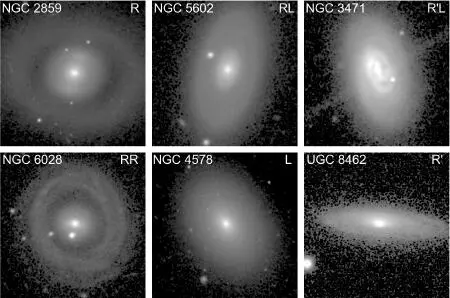
Figure 1.16. Examples of different types of outer features. The feature type is in the upper right of each frame
S0 galaxies are generally viewed as “armless” disk galaxies. Once referred to as “lenticulars” because of their double convex lens-like appearance in the edge-on view, S0s first appeared as a galaxy type in Hubble’s 1936 book, The Realm of the Nebulae , where he presents his “tuning fork” depiction of his system ( Figure 1.1). Although ellipticals, normal spirals and barred spirals were the main types recognized in Hubble’s original 1926 classification system, the possibility of S0 galaxies was raised even then. Something was puzzling about the original system in that Sa galaxies usually had fully developed arms while SBa galaxies did not. To account for this, Hubble hypothesized the existence of a class of disk-shaped galaxies lacking spiral arms. He placed these at the juncture of the “tuning fork”, where the most flattened-looking E galaxies link with the two parallel sequences of spiral galaxies. As Hubble increased his database of photographic images of “nebulae”, real examples of the hypothesized group of armless disk galaxies were found. Hubble was working on a revision to his system but died before publishing it. Sandage (1961) used Hubble’s notes to make the revision: S0s were interpreted in terms of two sequences of three “normal” stages: S0 1, S0 2and S0 3, and three barred stages SB0 1, SB0 2and SB0 3( Figure 1.2). The subdivision of non-barred S0s was based on the development of structure such as the appearance of dust lanes, while the subdivision of barred S0s was based on the development of the bar from something very subtle to a more prominent feature.
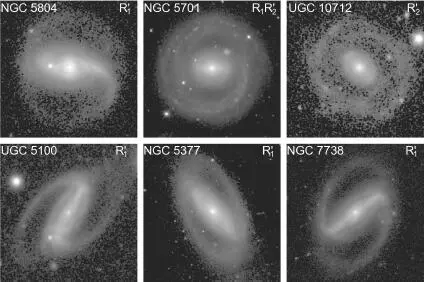
Figure 1.17. Outer resonant features. The feature type is in the upper right of each frame
The tuning fork arrangement of galaxy types with S0s included began to be questioned when it was realized that S0s had lower luminosities than Sa or SBa galaxies and thus do not really link smoothly to those parts of the Hubble sequence. This led to the “parallel-sequence” interpretation of S0s, whereby S0s form a sequence parallel to the spirals (not to be confused with the normal/barred spiral prongs of the tuning fork). This interpretation is based on a nurture view that S0s are former spiral galaxies that have been stripped of their interstellar gas and dust through environmental interactions (van den Bergh 1976). On a sequence between spirals and S0s, van den Bergh placed what he called “anemic spirals” or galaxies in an intermediate state of stripping. Real examples of galaxies in such an intermediate state have been found in the Virgo Cluster (Koopmann and Kenney 2004) and the Coma Cluster (Yagi et al . (2010).
Читать дальше
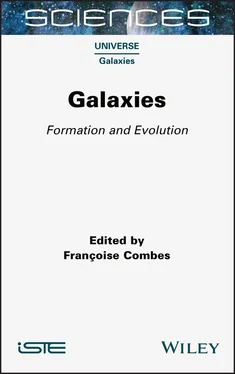

 , where the inner/nuclear variety is (r,nr,nb). Knapen (2005) determined that 21±5% of spiral galaxies have nuclear rings or related features.
, where the inner/nuclear variety is (r,nr,nb). Knapen (2005) determined that 21±5% of spiral galaxies have nuclear rings or related features.
 ,
,  and
and  subclasses of outer rings and pseudorings. The way to recognize these features is described by Buta (2017b). The outer resonant subclasses constitute only a small fraction of outer features. Most disk-shaped galaxies do not have an outer feature, but among the ones that do, outer pseudorings of type R′ (excluding the resonant subclasses) are most abundant. The formation of rings has been reviewed in Buta and Combes (1996) and is discussed further in section 1.12.
subclasses of outer rings and pseudorings. The way to recognize these features is described by Buta (2017b). The outer resonant subclasses constitute only a small fraction of outer features. Most disk-shaped galaxies do not have an outer feature, but among the ones that do, outer pseudorings of type R′ (excluding the resonant subclasses) are most abundant. The formation of rings has been reviewed in Buta and Combes (1996) and is discussed further in section 1.12.




